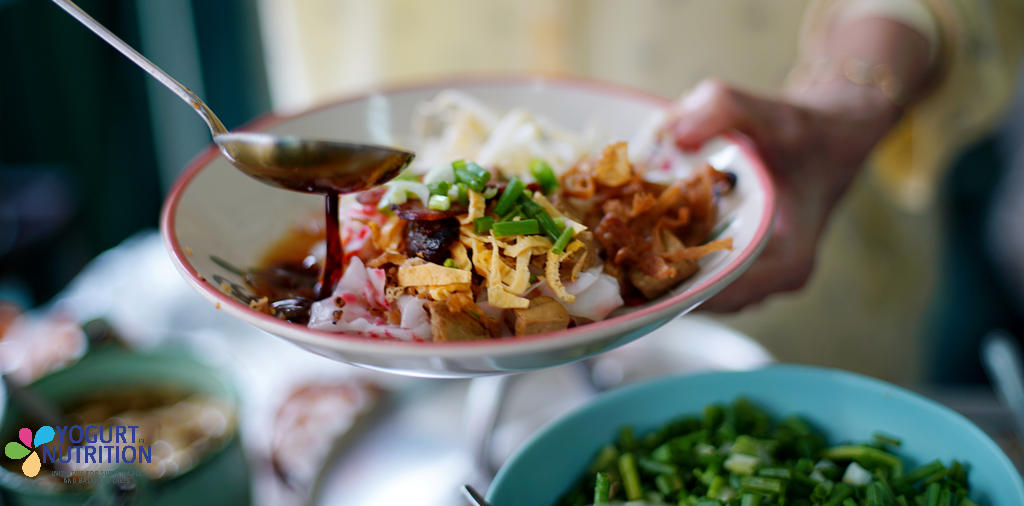We know we can make an impact both on our health and our environment by shifting to healthy sustainable diets. But what’s best for us isn’t always what’s best for the planet. So how do we strike the right balance?
To answer this, several ‘ingredients’ need to go into the melting pot. As well as health effects, global food production and distribution contribute to climate change and environmental damage through release of greenhouse gas emissions (GHGEs), water and land use, pollution and biodiversity loss. Experts say that most of our current eating habits are unsustainable and harming the planet.
How do we continue to feed ourselves without destroying the planet?
By definition, healthy sustainable diets are nutritious, affordable and accessible, culturally acceptable and have a low environmental impact. The best balance between these aspects is achieved by eating a varied predominantly plant-based diet, reducing food loss/waste and improving food production practices, say the authors of this article.
Healthy sustainable diets may be, for example, flexitarian, pescatarian, vegetarian or vegan.
- A flexitarian diet contains high levels of plant-sourced foods, moderate amounts of poultry, fish, eggs and dairy, and low levels of meat.
- A territorial diversified diet (TDD, eg, Mediterranean and New Nordic diets) is a region-specific flexitarian diet that primarily includes seasonal, locally-sourced foods.
- A vegetarian diet includes plant-sourced foods, dairy and eggs but excludes meat and fish.
- A pescatarian diet is a vegetarian diet that includes fish.
- A vegan diet excludes all animal-sourced foods (eg, meat, fish, dairy, eggs, honey).
Choosing the diet that’s best for you and for the planet
Here are some tips to help you make the food choices that are right for you and for future generations:
- Choose animal-sourced foods with care – Animal-sourced foods account for over 60% of food production-related GHGEs worldwide. But emissions vary within this food group with beef accounting for much more GHGEs (per kg of food) than pork, chicken, fish, eggs and milk. That’s partly because cattle produce methane, but also because beef needs up to 28 times more land than all other animals (including dairy cattle) combined. This suggests that while the largest reduction in GHGEs can be achieved by excluding meat from our diets, flexitarian diets/TDDs that significantly reduce the consumption of red meat but include moderate intakes of poultry, dairy, eggs and fish might also be effective, albeit to a lesser extent.
- Eat plenty of greens -We can help reduce GHGEs by eating more plant-sourced food and less animal-sourced foods, especially red meat. From the health side, compared with western diets, plant-based diets have been associated with reduced risks of obesity, early death and diet-related diseases (eg, heart disease, diabetes and some cancers). But people who exclude animal-source foods altogether run the risk of being deficient in certain nutrients needed for good health, the authors point out. A flexitarian diet or TDD that is plant-based and includes only a little red meat but has moderate intakes of poultry, dairy, eggs and fish may provide a good balance, making it easier to ensure you get the right nutrients.
- Go local – The environmental impact of a food depends on how and where it is produced, how far it has had to travel to reach you, and how it has been stored. So the GHGEs are much greater if you’re choosing exotic fruits and vegetables that have come from far away, especially if they’ve travelled by air, or if they have been grown in greenhouses. Eating locally-sourced foods that are in season can help to reduce the environmental impact of your diet, and the chances are they’ll also cost you less.
- Be varied – Variety is important in our diet because food components interact to alter our ability to digest nutrients from foods. For example, lactose and vitamin D increase the absorption of calcium, B vitamins, folate, magnesium and zinc. Including a wide range of foods, especially those rich in fibre, can also help to increase the types of microbes living in our gut. These microbes play an important role in maintaining good health. The range of gut microbes can be increased still further by including probiotic and fermented foods (eg, fermented milk, yogurt, kefir) in your diet.
Health professionals play a key role in guiding healthy sustainable diets
It’s a good idea to get professional advice if you are following a vegan, vegetarian or pescatarian diet to avoid potential nutritional deficiencies. This is particularly important for infants, children and adolescents, women and the elderly, say the authors of this article.
Special dietary education and supplementation aren’t needed for flexitarian diets or TDDs. You may find that a flexitarian diet is easier to maintain if you’re switching from a western diet and want a sustainable healthy alternative.
The authors also point to the important role of healthcare professionals and policy makers in promoting healthy eating strategies in schools, helping families learn more about the benefits of meal planning, ensuring all countries have healthy diet guidelines, and improving access to trained dietitians and nutritionists.
‘In reviewing the criteria for sustainable healthy diets, we show that flexitarian and territorial diversified diets (TDDs) may offer the optimal balance between human and planetary health without the need for support from healthcare professionals.’ – Moreno et al, 2021.



